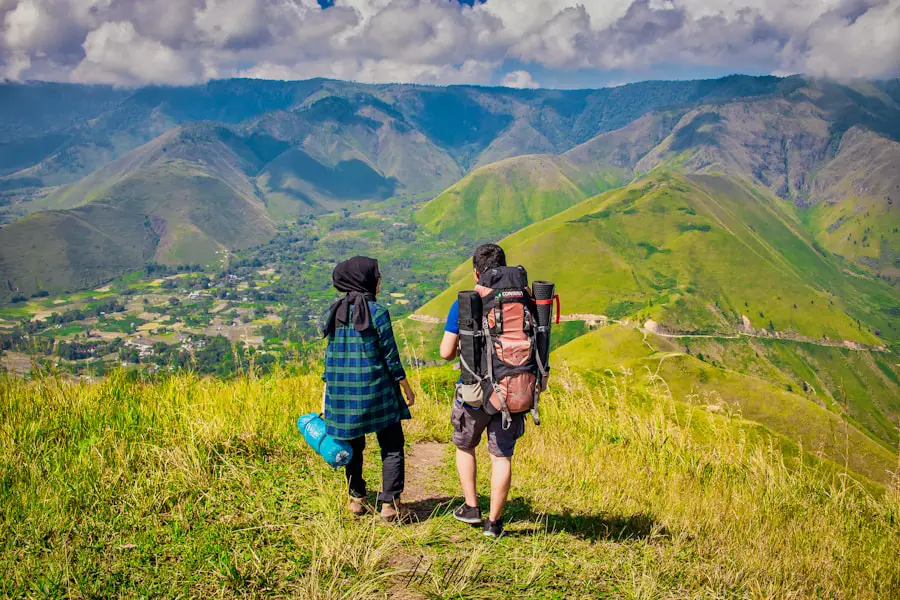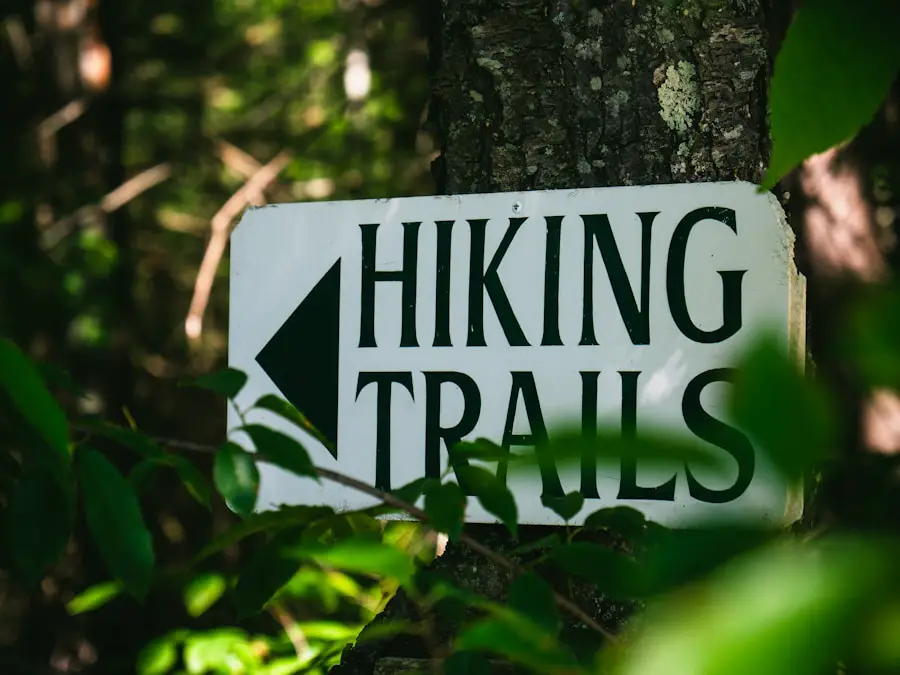Hiking, a timeless activity that connects individuals with nature, has gained immense popularity over the years. It involves walking in natural environments, often on trails or paths, and can range from leisurely strolls to challenging treks. The allure of hiking lies not only in the physical exercise it provides but also in the mental rejuvenation and spiritual connection to the great outdoors.
As people increasingly seek refuge from the hustle and bustle of urban life, hiking offers a perfect escape, allowing them to immerse themselves in the beauty of landscapes, breathe fresh air, and experience the tranquility of nature. The origins of hiking can be traced back to ancient civilizations, where walking was a primary means of transportation. Over time, it evolved into a recreational activity, with dedicated trails and parks established to facilitate exploration.
Today, hiking is embraced by individuals of all ages and fitness levels, making it an accessible form of exercise and adventure. Whether traversing a local park or embarking on a multi-day backpacking expedition, hikers are united by a shared passion for discovery and appreciation of the natural world.
Key Takeaways
- Hiking is a great way to connect with nature and stay active while exploring new places.
- The benefits of hiking include physical exercise, stress relief, and improved mental well-being.
- Different types of hiking trails include day hikes, overnight hikes, and multi-day backpacking trips, each offering unique experiences.
- Essential gear for hiking includes proper footwear, clothing, navigation tools, and emergency supplies to ensure a safe and enjoyable trip.
- Safety tips for hiking include staying hydrated, being aware of wildlife, and informing others of your hiking plans to ensure a safe and enjoyable experience.
The Benefits of Hiking
Engaging in hiking offers a multitude of physical benefits that contribute to overall health and well-being. One of the most significant advantages is cardiovascular fitness. Hiking elevates the heart rate, promoting better circulation and strengthening the heart muscle.
Regular hikers often experience improved endurance and stamina, which can translate into enhanced performance in other physical activities. Additionally, hiking is a weight-bearing exercise that helps build and maintain bone density, reducing the risk of osteoporosis as individuals age. Beyond physical health, hiking also provides substantial mental health benefits.
Studies have shown that spending time in nature can reduce stress levels, alleviate symptoms of anxiety and depression, and improve mood. The rhythmic nature of walking combined with the serene environment fosters mindfulness, allowing hikers to disconnect from daily stressors and reconnect with themselves. Furthermore, hiking can enhance cognitive function; research indicates that exposure to natural settings can boost creativity and problem-solving skills.
This dual impact on both body and mind makes hiking a holistic approach to wellness.
Different Types of Hiking Trails

Hiking trails vary widely in terms of difficulty, length, and terrain, catering to diverse preferences and skill levels. One common classification is based on trail difficulty: easy, moderate, and strenuous. Easy trails are typically well-maintained paths that are suitable for beginners or families with children.
These trails often feature gentle inclines and are usually shorter in distance, making them ideal for casual outings or leisurely walks. Moderate trails present a step up in challenge, often incorporating steeper inclines or uneven terrain. These trails may require a bit more stamina and experience but are still accessible to most hikers.
Strenuous trails are designed for seasoned adventurers; they often involve significant elevation gain, rugged landscapes, and longer distances. Such trails may lead to breathtaking vistas or remote wilderness areas but demand physical fitness and preparation. Additionally, specialized trails exist for specific activities such as backpacking, climbing, or even winter hiking, each offering unique experiences tailored to enthusiasts.
Essential Gear for Hiking
| Essential Gear for Hiking | Description |
|---|---|
| Hiking Boots | Durable, waterproof boots with good ankle support |
| Backpack | Large enough to carry essentials like water, food, and extra clothing |
| Water Bottle | Reusable, durable bottle for staying hydrated on the trail |
| Map and Compass | For navigation in case of getting lost |
| First Aid Kit | Basic supplies for treating minor injuries on the trail |
| Sun Protection | Sunscreen, sunglasses, and a hat to protect from sun exposure |
| Extra Clothing | Layers for changing weather conditions and moisture-wicking materials |
| Headlamp/Flashlight | For hiking in low light or emergencies |
Proper gear is crucial for a successful hiking experience, as it enhances comfort and safety while navigating various terrains. Footwear is perhaps the most critical component; sturdy hiking boots or shoes provide support and traction on uneven surfaces. When selecting footwear, hikers should consider factors such as fit, waterproofing, and breathability to ensure optimal performance during their trek.
In addition to footwear, clothing plays a vital role in maintaining comfort throughout the hike. Layering is key; hikers should wear moisture-wicking base layers to keep sweat away from the skin, insulating mid-layers for warmth, and waterproof outer layers to protect against rain or wind. Accessories such as hats, gloves, and sunglasses can also enhance comfort by shielding against sun exposure or cold temperatures.
Beyond clothing, essential gear includes a well-stocked backpack containing items like water bottles or hydration systems, snacks for energy replenishment, navigation tools such as maps or GPS devices, first aid kits for emergencies, and multi-tools for various tasks along the trail.
Safety Tips for Hiking
Safety should always be a top priority when embarking on a hiking adventure. One fundamental tip is to plan ahead by researching the trail conditions and weather forecasts before setting out. Understanding the terrain and potential hazards can help hikers prepare adequately for their journey.
It’s also advisable to inform someone about your hiking plans, including your expected return time; this ensures that someone will be aware if you encounter difficulties. Another critical aspect of hiking safety is recognizing your limits. Hikers should choose trails that match their fitness level and experience; pushing beyond one’s capabilities can lead to exhaustion or injury.
Staying hydrated is essential; hikers should drink water regularly throughout their trek to prevent dehydration.
Additionally, carrying a first aid kit equipped with basic supplies can be invaluable in case of minor injuries or emergencies. Lastly, being aware of wildlife encounters is crucial; understanding how to react appropriately can prevent dangerous situations while allowing hikers to appreciate nature responsibly.Hiking Etiquette

Hiking etiquette is an essential aspect of ensuring a positive experience for all trail users. One fundamental principle is to yield the right of way appropriately; generally, hikers traveling uphill have the right of way over those descending. This practice helps maintain a smooth flow on trails and minimizes disruptions for both parties involved.
Additionally, when encountering other hikers or groups on narrow paths, it’s courteous to step aside and allow them to pass. Another important aspect of hiking etiquette involves respecting nature and fellow hikers by adhering to the “Leave No Trace” principles. This includes packing out all trash, staying on designated trails to minimize environmental impact, and avoiding disturbing wildlife or vegetation.
Hikers should also be mindful of noise levels; keeping conversations at a reasonable volume allows others to enjoy the tranquility of nature without unnecessary distractions. By practicing good etiquette on the trails, hikers contribute to a respectful community that values shared experiences in the great outdoors.
Environmental Impact of Hiking
While hiking offers numerous benefits for individuals and communities alike, it also carries potential environmental impacts that must be acknowledged. Increased foot traffic on popular trails can lead to soil erosion, damage to vegetation, and disruption of wildlife habitats. As more people take to the trails, it becomes imperative for hikers to understand their role in preserving these natural spaces for future generations.
To mitigate environmental impact, many organizations advocate for sustainable hiking practices. This includes staying on marked trails to prevent trampling sensitive ecosystems and using established campsites when backpacking to minimize disturbances in pristine areas. Additionally, hikers can participate in trail maintenance efforts or volunteer with local conservation groups to help restore damaged areas and promote responsible outdoor recreation.
By fostering a culture of environmental stewardship among hikers, we can ensure that our beloved trails remain vibrant and accessible for years to come.
Embracing the Hiking Lifestyle
Embracing the hiking lifestyle goes beyond simply enjoying occasional walks in nature; it involves cultivating a deep appreciation for the outdoors while prioritizing health, safety, and environmental responsibility. As individuals embark on their hiking journeys—whether they are seasoned adventurers or newcomers—they become part of a larger community that values exploration and connection with nature. The benefits of hiking extend far beyond physical fitness; they encompass mental clarity, emotional well-being, and a sense of belonging within the natural world.
By understanding the various types of trails available and equipping themselves with essential gear while adhering to safety guidelines and etiquette principles, hikers can create enriching experiences that resonate long after they return home. Ultimately, embracing the hiking lifestyle fosters not only personal growth but also a commitment to preserving our planet’s natural beauty for future generations to enjoy.
If you’re planning on going hiking, it’s important to have the right gear and equipment. One essential item to consider bringing along is a portable water bottle. In the article “5 Must-Have Portable Water Bottles for Your Spring 2025 Adventures,” you can find a variety of options that are perfect for staying hydrated while out on the trails. Having a reliable source of clean drinking water is crucial for any hiking excursion, so be sure to check out this helpful guide before embarking on your next outdoor adventure. Read more here.
Love travel? Join Our Facebook Community For More Tips.
FAQs
What is the definition of hiking?
Hiking is a recreational activity that involves walking in natural environments, often on trails or paths. It is typically done for the enjoyment of nature, exercise, and adventure.
What are the benefits of hiking?
Hiking offers numerous physical and mental health benefits, including improved cardiovascular fitness, muscle strength, stress reduction, and mental clarity. It also provides an opportunity to connect with nature and explore new environments.
What equipment is needed for hiking?
Basic hiking equipment includes sturdy and comfortable footwear, appropriate clothing for the weather, a backpack, water, snacks, a map or GPS device, and possibly trekking poles. The specific gear needed may vary depending on the length and difficulty of the hike.
What are some popular hiking destinations?
Popular hiking destinations include national parks, state parks, mountain ranges, coastal trails, and wilderness areas. Some well-known hiking destinations include the Appalachian Trail, the Pacific Crest Trail, the Grand Canyon, and the Swiss Alps.
What are some safety tips for hiking?
Safety tips for hiking include informing someone of your plans, staying on marked trails, bringing enough water and food, being aware of wildlife, and being prepared for changes in weather. It’s also important to have a basic understanding of first aid and to carry a first aid kit.
